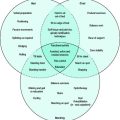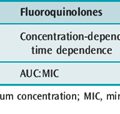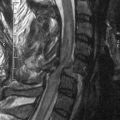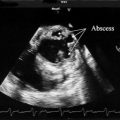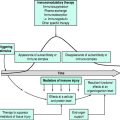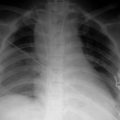Chapter 100 Sedation and analgesia in children
All children, including preterm infants, feel and remember pain and discomfort.1 Provision of adequate sedation and analgesia should therefore be a priority in the management of all critically ill children.
INDICATIONS AND BENEFITS
In addition to its humane benefits, sedation and analgesia can suppress non-advantageous physiological responses to noxious stimuli. Analgesic suppression of the marked postsurgery stress response has been associated with significant improvements in postoperative morbidity and mortality.2–4
ASSESSMENT
Pain and sedation assessment tools should also be utilised. Neonates and infants are particularly difficult to assess and validated assessment tools, including the Premature Infant Pain Profile (PIPP) and CRIES scale, are helpful objective measures of pain in this group.5 The Multidimensional Assessment of Pain Scale (MAPS) has recently been validated as a tool for assessing postoperative pain in preverbal children.6 Established tools such as the Face, Legs, Activity, Cry and Consolability (FLACC) Scale have been modified to enhance the pain assessment of children with cognitive impairment.7 The COMFORT and the modified COMFORT ‘Behavior’ are validated observer reported sedation scales for children 1–3 years.8 In older children, self-reporting measurement scales can be used but these require a degree of patient cooperation.
The most challenging group of patients to manage optimally are those receiving muscle paralysis. Attempts to enhance the limited clinical parameters available for interpretation with an objective measure have centred on the bispectral index (BIS). Validation studies in the paediatric intensive care environment are limited and highlight the probable inaccuracy of current methods of assessing sedation in paralysed patients.9 In general it is preferable to err on the side of over- rather than undersedation in the paralysed patient.
APPROACH TO MANAGEMENT
The management of discomfort, anxiety and pain should be multifaceted. Recently published consensus guidelines from the United Kingdom Paediatric Intensive Care Society present a detailed analysis of the evidence for assessment and management strategies.10
Sedation and analgesia should be tailored to the patient’s particular requirements. It is vital that there be continuous assessment and frequent adjustment of regimes so that optimal levels of sedation and adequate analgesia are delivered at all times. This requires a clear understanding by medical and nursing staff of the aims of management and of the pharmacology of the agents being administered. Relief of pain should be achieved with analgesic agents and care must be taken to avoid the overadministration of sedative agents when the patient’s primary need is for pain relief (Table 100.1). While emphasis should be on optimal comfort, consideration should also be given to minimising side-effects. A single drug may be effective but often a combination of medications and a combination of delivery methods (e.g. i.v./oral, i.v./epidural) will be useful and may avoid the side-effects of high doses of a single agent. A recent trend towards analgesia-based sedation, as an approach to managing the ventilated adult patient, has shown benefits when compared to hypnotic-based regimes.11
Table 100.1 Single dose and infusion rates of sedative and analgesic drugs*
| Drug | Bolus dose | Infusion rate |
|---|---|---|
| Morphine | 0.1–0.2 mg/kg i.v. | 10–40 μg/kg per hour |
| Fentanyl | 1–2 μg/kg i.v. | 1–10 μg/kg per hour |
| Remifentanil | 0.1–0.5 μg/kg i.v. | 0.1–0.5 μg/kg per min |
| Midazolam | 0.1–0.2 mg/kg i.v. | 50–200 μg/kg per hour |
| 0.5 mg/kg (oral) | ||
| Ketamine | 1–2 mg/kg i.v. | 10–20 μg/kg per min (sedation) |
| 4 μg/kg per min (analgesia) | ||
| Propofol | 1–3 mg/kg i.v. | < 4 mg/kg per hour (short term) |
| Clonidine | 1–2 μg/kg i.v. | 0.1–2 μg/kg per hour |
| 4 μg/kg (oral) | ||
| Dexmedetomidine | 0.5–1 μg/kg i.v. | 0.2–1.0 μg/kg per hour |
Note: Some infusion rates are described per minute and others per hour.
NON-OPIOID AGENTS
MIDAZOLAM
Midazolam is water soluble, and has a rapid onset of action. Metabolism occurs in the liver and by 6 months of age is comparable to that of an adult. The standard i.v. sedative dose is 0.1–0.2 mg/kg and this is effective for uncomfortable procedures, such as echocardiography and cardioversion. The oral route (0.5 mg/kg) may also be useful though there is a 15-minute delay to onset of sedation. Nasal administration (0.2 mg/kg) can be useful in children who do not have established i.v. access and in whom oral agents are not appropriate. Although midazolam may be effective as the sole sedative agent for ventilated patients, higher doses, and often additional agents, are commonly required in young children (1–4 years).12 50–200 μg/kg per hour, in combination with an opioid (morphine 10–40 μg/kg per hour), is usually effective in facilitating mechanical ventilation. Dose-related respiratory depression occurs and hypotension can be significant in hypovolaemic patients and in those with depressed myocardial function. During continuous infusion, accumulation can occur, particularly in young infants (under 6 months) and in patients with liver dysfunction. The use of midazolam in neonatal intensive care is controversial as there are concerns regarding its safety and effectiveness as a long-term sedative in the newborn.13
KETAMINE
Ketamine is a dissociative anaesthetic agent with sedative, analgesic and amnesic properties. Biotransformation occurs by the microsomal enzyme system. Thus, there is little metabolism in the newborn and clearance is less and elimination half-life greater in infants than in older children and adults.14 Ketamine’s usefulness in preterm infants, to a postconceptual age of 51 weeks, is limited because of an increased risk of postanaesthetic apnoea. An initial i.v. dose of 1–2 mg/kg is usually adequate to induce deep sedation. Cardiovascular disturbance is minimal and ketamine is therefore particularly useful as the induction agent in status asthmaticus and in patients with a compromised haemodynamic state, such as tamponade. Prolonged sedation for ventilated children can be achieved with a continuous infusion of 10–15 μg/kg per min and analgesia can be provided by an infusion of 4 μg/kg per min. Concomitant use of an antisialogogue, such as glycopyrrolate, helps control the often seen increase in respiratory tract secretions. The unpleasant emergent phenomena, seen frequently in adults, probably occur less often in children. The traditional practice of concurrently administering a benzodiazepine with the aim of minimising these effects has minimal demonstrable benefit.15
PROPOFOL
Propofol is a rapidly acting hypnotic agent that is widely used in paediatric anaesthesia and intensive care for short- and longer-term sedation.16,17 Although it has no analgesic properties its short half-life makes it an attractive agent for sedation. The half-life decreases with age, probably due to development of metabolising capacity and increasing hepatic flow.18 Sedation can be achieved in the spontaneously breathing patient, with an induction dose of 1 mg/kg, followed by intermittent smaller doses: 2–3 mg/kg per hour has delivered uncomplicated satisfactory sedation to ventilated children.19 However, propofol should be used with caution for sedation in the PICU because of the reported association between high dose (> 4 mg/kg per hour), prolonged (> 29 hours) infusions and a clinical syndrome (propofol infusion syndrome) consisting of metabolic acidosis, lipaemia, cardiac failure, arrhythmias and death.20 The pathogenesis of this syndrome remains unclear, although it has been postulated that a disturbance of mitochondrial function leading to disordered hepatic lipid regulation underlies the disorder.21 Lipaemia may be an early indicator of developing problems and successful use of haemodialysis in the early phase is the only therapy described.22 There are sufficient concerns to limit the use of propofol in the PICU to short-term sedation in the stable ventilated child. Administration of propofol in the presence of shock, hypoxaemia or acute liver dysfunction, or for long-term, high-dose sedation cannot be recommended. It should be noted that the manufacturers advise against the use of propofol for sedation of children during intensive care.
CHLORAL HYDRATE
Chloral is an effective oral hypnotic and sedative agent with no analgesic effect. The hypnotic dose is 50 mg/kg and appropriate sedation may be achieved with lower doses. Gastric irritation can be a problem in some children. Toxic doses produce depression of respiration and cardiac contractility. Despite the disadvantage of delayed onset, chloral can be useful given prior to procedures, or as a supplemental sedative agent in the ventilated child and it can effectively induce nocturnal sleep. On a cautionary note, there is some evidence that it may not be suitable in acutely wheezing infants.23
CLONIDINE AND DEXMEDETOMIDINE
Clonidine is an α2-adrenoreceptor agonist with significant neurological, neuroendocrine and cardiovascular effects that result in sedation, analgesia and reduced sympathetic outflow. It is rapidly absorbed after oral administration and has a half-life of 9–12 hours. Metabolism is via the liver and kidney and approximately 50% is excreted unchanged in the urine. A single oral dose (4 μg/kg) can provide both preoperative sedation and postoperative analgesia following moderately painful surgery.24 An i.v. infusion (0.1–2 μg/kg per hour) in combination with midazolam (50 μg/kg per hour) has been shown to produce effective sedation in ventilated children without haemodynamic disturbance.25 Clonidine can also have a role in the management of the autonomic storms seen following severe traumatic brain injury and in the management of opioid withdrawal.
Dexmedetomidine is a selective α2-agonist that has many of the properties of clonidine and may produce less respiratory depression. It is metabolised in the liver and, in adults, has an elimination half-life of 2 hours. It has provided satisfactory sedation and analgesia with minimal respiratory or haemodynamic disturbance in postoperative ventilated and spontaneously breathing adult patients. Respiratory stability during infusion has been sufficient to allow successful extubation of patients who had previously failed because of agitation.26 Use is approved and recommended by the manufacturer for the sedation of adult patients for up to 24 hours. In the paediatric population studies are limited. 0.5–1 μg/kg followed by an infusion of 0.5–1 μg/kg per hour has provided adequate sedation for non-invasive procedures.27 1 μg/kg followed by 0.1–2 μg/kg per hour, added to an opioid/benzodiazepine regime, has also been shown to improve patient comfort without significant respiratory depression.28 As with clonidine, bradycardia has been seen during continuous infusion.25,29
OPIOID ANALGESICS
MORPHINE
Morphine is frequently used to provide analgesia and as part of a sedative regime for children on mechanical ventilation. Marked variation in pharmacokinetics in the neonatal period has been demonstrated, but infants over 1 month of age eliminate morphine efficiently and should not be more sensitive to respiratory depression than adults. Clearance and half-life (2 hours) are at adult values by 6 months of age.30 The active metabolite is renally excreted and can therefore accumulate in renal failure. The standard i.v. dose is 0.1–0.2 mg/kg and an infusion rate of 20–40 μg/kg per hour provides safe postoperative pain relief in spontaneously breathing patients. With careful titration of dose to effect, higher rates can be administered, particularly to the child on mechanical ventilation. Patient-controlled analgesia devices delivering fixed doses of opioid, with or without a background infusion, can be used successfully by the majority of school-aged children and may occasionally be appropriate in intensive care. Histamine-related side-effects, in particular nasal itch, may warrant a change of opioid and fentanyl is an alternative.
FENTANYL AND ALFENTANIL
Fentanyl has theoretical advantages over morphine in certain situations because of its rapid onset and its systemic and pulmonary hemodynamic stability. Termination of the effects of a single dose is by redistribution. Clearance is more rapid in neonates and infants compared to adults and does not change with time during continuous infusion. However, after prolonged infusion, unchanged fentanyl is returned to the circulation from peripheral compartments, resulting in a prolonged terminal elimination half-life of approximately 21 hours.31 The effective dose for painful procedures is 1–2 μg/kg. Fentanyl is useful as an anaesthetic agent in patients with labile pulmonary vasculature, as it can blunt changes in pulmonary vascular resistance seen with stimulation.4 However, it does not prevent the increase in pulmonary vascular pressure caused by hypoxia.32 Infusions of 1–5 μg/kg per hour produce effective sedation in neonates on mechanical ventilation; 1–10 μg/kg per hour is required for analgesia in older children. Tolerance, noted in both neonates and older children, can develop rapidly.33 Fentanyl’s short duration of action makes it suitable for use in epidural regimens.
REMIFENTANIL
Remifentanil is a synthetic opioid with potent analgesic properties, rapid onset of action, and, following initial redistribution, a short half-life of around 8 minutes. Metabolism occurs via non-specific esterases and is therefore relatively independent of renal and hepatic mechanisms. The short duration of action allows rapid emergence from general anaesthesia, thereby facilitating extubation or assessment of the patient’s neurological state.34 Postoperative pain needs to be managed with an alternative analgesic regime and an opioid should be administered prior to discontinuing remifentanil.
Infusions of 0.1–0.5 μg/kg per min have produced satisfactory analgesia and sedation in ventilated adult patients and there is evidence that ventilation times are shorter and weaning from ventilation more rapid in comparison to standard sedation regimes.11,35 Although remifentanil is widely used in paediatric anaesthesia there are few data available on its use in children in intensive care. Uncomplicated and successful use in the induction and sedation of a ventilated preterm neonate has been described.36 As metabolism is relatively independent of renal and hepatic mechanisms, remifentanil could be considered for use in patients with liver and/or renal impairment who do not have continuing pain and in whom rapid termination of sedation is required.
PARACETAMOL AND NON-STEROIDAL ANTI-INFLAMMATORY DRUGS
Paracetamol is useful for mild to moderate pain and is an effective supplement to opioids for more severe pain. Enteral preparations, though useful, are prone to erratic absorption. The intravenous preparation Perfalgan is a more useful drug in the intensive care setting and has been shown to reduce opioid requirements in adults with few side-effects following orthopaedic surgery.37 Data in children and neonates are limited. The recommended initial i.v. dose is 15 mg/kg (30 mg/kg p.o. or rectal) and the total daily i.v. dose should be limited to 60 mg/kg (90 mg/kg p.o.). Lower i.v. doses (7.5 mg/kg 6-hourly) are recommended for neonates. Contraindications to paracetamol include liver dysfunction and care must be taken to avoid liver injury in all children.
INHALED AGENTS
NITROUS OXIDE
Nitrous oxide is a potent analgesic agent. It is useful in intensive care during short painful procedures such as removal of surgical drains. A mixture of 50% nitrous oxide with oxygen provides analgesia in awake and cooperative patients. It is unsuitable for repeated or continuous use because of toxicity and administration to younger children may cause distress because of the need for application of a mask.
ISOFLURANE
Isoflurane has been used for long-term sedation in intensive care in adults. As elimination is independent of hepatic and renal mechanisms, there are theoretical advantages in many critically ill patients. However, an association between isoflurane sedation and neurological abnormalities has been reported in children.38 These abnormalities, although reversible, were a considerable clinical problem and make this technique unsuitable.
DRUG WITHDRAWAL SYNDROMES
Opioid withdrawal is a recognised problem and symptoms include poor feeding, tremors, agitation, poor sleeping, tachycardia, diarrhoea, sweating, increased muscle tone, dystonic posturing and seizures. It occurs particularly following prolonged high-dose infusions. The risk of withdrawal following a fentanyl infusion is associated with the duration of infusion and the total dose. Infusion for > 5 days or a total dose > 1.5 mg/kg was associated with greater than 50% incidence.39
Benzodiazepine withdrawal (agitation, anxiety, sweating, tremor) is also seen and the risk following a midazolam infusion is associated with a total dose > 60 mg/kg.40 Careful attention to weaning an infusion in high-risk patients can minimise withdrawal symptoms. Longer-term pharmacological management is occasionally required and is best managed by administering the agent from which the patient is withdrawing. Methadone, benzodiazepines and clonidine have been used via i.v., oral and subcutaneous routes.41 Recent evidence suggests that short-term (5-day) opioid weaning programmes can be successful.42 Although withdrawal can be a significant problem, adequate sedation or analgesia should not be withheld because of fears of the development of drug dependence.
LOCAL ANAESTHESIA
Local anaesthesia can produce effective analgesia without systemic effects and therefore has significant advantages in many patients, particularly the postoperative group. In the intensive care setting, it can be used as the sole method of providing analgesia or in combination with i.v. agents. The risk of toxicity is related both to the dose and to the rapidity of absorption, which is dependent on local blood flow. Metabolism of the amide local anaesthetics (lidocaine, bupivacaine) is via the cytochrome P-450 system and their half-life is longer in infants less than 6 months of age. Unbound drug does not produce analgesia but is potentially toxic as infants have lower levels of the binding protein α-glycoprotein.43 The use of local anaesthesia in infancy therefore requires careful assessment and close monitoring.
EMLA
EMLA, an emulsion of lidocaine and prilocaine, is effective in reducing the pain associated with percutaneous procedures.44 It needs to be applied to the skin 60 minutes beforehand and thus is unsuitable for urgent procedures. Systemic absorption of the prilocaine component and subsequent methaemoglobinaemia can occur. Neonates, because of their relative deficiency of methaemoglobin reductase, are particularly at risk and EMLA should be used with caution in this group.
NERVE BLOCKS
Femoral nerve blockade is a simple technique that produces effective analgesia in cases of femoral shaft fracture. A single injection is effective for approximately 3 hours and longer term analgesia can be provided by a continuous infusion of bupivacaine (0.125%) at 0.2–0.3 ml/kg per hour through a fine catheter placed adjacent to the femoral nerve.45 As this technique can decrease opioid requirements, it is particularly useful in trauma patients who have suffered a coexistent head injury.
Intercostal nerve blocks may be useful after thoracotomies and liver transplants in children.46 A single dose of 0.125% bupivacaine (maximum single dose 2 mg/kg) can produce up to 8 hours of analgesia. The dose must be carefully limited, because the relatively high blood flow to the area increases the risk of toxicity. Continuous infusions via an intercostal catheter can provide ongoing pain relief. These require careful monitoring in the PICU, particularly regarding maximal dose. There is a risk of pneumothorax with this technique and it should therefore be avoided when there is significant coexistent lung disease.
EPIDURAL ANALGESIA
Caudal, lumbar and thoracic epidural anaesthesia can provide effective control of postoperative pain in children.47,48 The procedures must be performed by skilled experienced staff who clearly understand the risks and benefits. A complication rate of 1.5 per 1000 has been reported, with dural puncture and intravascular injection seen most commonly.49 Other risks include cord injury, epidural infection and excessive motor blockade. Infants under 6 months are at highest risk because of their size and immature metabolism.
Many epidural catheter insertions are performed in the operating theatre and general anaesthesia is a prerequisite in most paediatric patients. PICU care may subsequently be required because of the nature of the surgery (e.g. thoracotomy, liver transplant) or because of underlying patient factors (e.g. neurological disorders, morbid obesity, age). Epidurals have been used in paediatric cardiac surgery without clear benefit over conventional postoperative analgesia.50 Particular indications for commencing epidural analgesia in the PICU include burns in a suitable distribution (e.g. abdomen and lower limbs) and blunt chest trauma with rib fractures. Contraindications include shock, hypovolaemia, meningitis, coagulopathy and local skin infection.
1 Anand KJS, Hickey PR. Pain in the foetus and neonate. N Engl J Med. 1987;317:1321-1329.
2 Anand KJS, Ward-Platt MP. Neonatal and paediatric responses to anaesthesia and operation. Int Anesthesiol Clin. 1988;26:218-225.
3 Anand KJS, Hickey PR. Halothane-morphine compared with high dose sufentanil for anaesthesia and postoperative analgesia in neonatal cardiac surgery. N Engl J Med. 1992;326:1-9.
4 Hickey P, Hansen DD, Wessell DL, et al. Blunting of stress response in the pulmonary vasculature of infants by fentanil. Anesth Analg. 1985;64:1137-1142.
5 McNair C, Ballantyne M, Dionne K, et al. Postoperative pain assessment in the neonatal intensive care unit. Arch Dis Child Fetal Neonatal Ed. 2004;89:F537-541.
6 Ramelet AS, Rees N, McDonald, et al. Development and preliminary psychometric testing of the Multidimensional Assessment of Pain Scale: MAPS. Paediatr Anaesth. 2007;17:333-340.
7 Malviya S, Voepel-Lewis T, Burke C, et al. The revised FLACC observational pain tool: improved reliability and validity for pain assessment in children with cognitive impairment. Paediatr Anaesth. 2006;16:258-265.
8 Ista E, van Dijk M, Tibboel D, et al. Assessment of sedation in pediatric intensive care patients can be improved by using the COMFORT ‘behavior’ scale. Pediatr Crit Care Med. 2005;6:58-63.
9 Aneja R, Heard AM, Fletcher JE, et al. Sedation monitoring of children by the Bispectral Index in the paediatric intensive care unit. Pediatr Crit Care Med. 2003;4:60-64.
10 Playfor S, Jenkins I, Boyles C, et al. Consensus guidelines on sedation and analgesia in critically ill children. Intensive Care Med. 2006;32:1125-1136.
11 Park G, Lane M, Rogers S, et al. A comparison of hypnotic and analgesic based sedation in a general intensive care unit. Br J Anaesth. 2007;98:76-82.
12 Gast-Bakker DH, ven der Werff SD, Sibarani-Ponsen R, et al. Age is of influence on midazolam requirements in a paediatric intensive care unit. Acta Paediatr. 2007;96:414-417.
13 Ng E, Taddio A, Ohisson A. Intravenous midazolam infusion for sedation of infants in the neonatal intensive care unit. Cochrane Database Syst Rev. 2003. CD002052
14 Chang T, Glazko T. Biotransformation and metabolism of ketamine. Int Anesthesiol Clin. 1974;12:157-177.
15 Sherwin TS, Green SM, Khan A, et al. Does adjunctive midazolam reduce recovery agitation after ketamine sedation for pediatric procedures? A randomised, double blind, placebo controlled trial. Ann Emerg Med. 2000;35:229-238.
16 Playfor SD, Venketash K. Current patterns of propofol use in the United Kingdom and North America. Paediatr Anaesth. 2004;14:501-504.
17 Festa M, Bowra J, Schell D. Use of propofol in Australian and New Zealand paediatric intensive care units. Anaesth Intensive Care. 2002;30:786-793.
18 Jones RDM, Chan K, Andrew LJ. Pharmacokinetics of propofol in children. Br J Anaesth. 1990;65:661-667.
19 Cornfield DN, Tegtmeyer K, Nelson MD, et al. Continuous propofol infusion in 142 critically ill children. Pediatrics. 2002;110:1177-1181.
20 Bray RJ. Propofol infusion syndrome in children. Paediatr Anaesth. 1998;8:491-499.
21 Ahlen K, Buckley CJ, Goodale DB, et al. The ‘propofol infusion syndrome’: the facts, their interpretation and implications for care. Eur J Anaesthesiol. 2006;23:990-998.
22 Cray SH, Robinson BH, Cox PN. Lactic acidaemia and bradyarrhythmia in a child sedated with propofol. Crit Care Med. 1998;26:2087-2092.
23 Mallol J, Sly PD. Effect of chloral hydrate on arterial oxygen saturation in wheezy infants. Pediatr Pulmonol. 1988;5:96-99.
24 Reimer EJ, Dunn GS, Montgomery CJ, et al. The effectiveness of clonidine as an analgesic in paediatric adenotonsillectomy. Can J Anaesth. 1998;45:1162-1167.
25 Ambrose C, Sale S, Howells R, et al. Intravenous clonidine infusion in critically ill children: dose dependent sedative effects and cardiovascular stability. Br J Anaesth. 2000;84:794-796.
26 Siobal MS, Kallet RH, Kivett VA, et al. Use of dexmedetomidine to facilitate extubation in surgical intensive care unit patients who failed previous weaning attempts following prolonged mechanical ventilation: a pilot study. Respir Care. 2006;51:492-496.
27 Berkenbosch JW, Wankum PC, Tobias JD. Prospective evaluation of dexmedetomidine for non-invasive procedural sedation in children. Pediatr Crit Care Med. 2005;6:435-439.
28 Walker J, Maccallum M, Fischer C, et al. Sedation using dexmedetomidine in pediatric burn patients. J Burn Care Res. 2006;27:206-210.
29 Chrystosomou C, Di Filippo S, Manrique AM, et al. Use of dexmedetomidine in children after cardiac and thoracic surgery. Pediatr Crit Care. 2006;7:126-131.
30 McRori TI, Lynn AM, Nespecca MK, et al. The maturation of morphine clearance and metabolism. Am J Dis Child. 1992;146:972-976.
31 Katz R, Kelly WH. Pharmacokinetics of continuous infusions of fentanyl in critically ill children. Crit Care Med. 1993;21:995-1000.
32 Vacanti JP, Crone PK, Murphy JP, et al. The pulmonary haemodynamic response to perioperative anaesthesia in the treatment of high-risk infants with congenital diaphragmatic hernia. J Pediatr Surg. 1984;19:672-679.
33 Arnold JH, Truog RD, Scavone JM, et al. Changes in the pharmacodynamic response to fentanyl in neonates during continuous infusion. J Pediatr. 1991;119:639-643.
34 Friesen RH, Veit AS, Archibald DJ, et al. A comparison of remifentanil and fentanyl for fast track paediatric cardiac anaesthesia. Paediatr Anaesth. 2003;13:122-125.
35 Breen D, Karabinis A, Malbrain M, et al. Decreased duration of mechanical ventilation when comparing analgesia based sedation using remifentanil with standard hypnotic-based sedation for up to 10 days in intensive care unit patients: a randomised trial. Crit Care. 2005;9:R200-10.
36 Pereira E, Silva Y, Gomez RS, et al. Remifentanil for sedation and analgesia in a pre-term neonate with respiratory distress syndrome. Paediatr Anaesth. 2005;15:993-996.
37 Sinatra RS, Jahr JS, Reynolds LW, et al. Efficacy and safety of single and repeated administration of 1 gram intravenous acetaminophen injection (paracetamol) for pain management after major orthopedic surgery. Anesthesiology. 2005;102:822-831.
38 Kelsall AWR, Ross-Russell R, Herrick MJ. Reversible neurological dysfunction following isoflurane sedation in pediatric intensive care. Crit Care Med. 1994;22:1032-1034.
39 Katz R, Kelly WH, Hsi A. Prospective study on the occurrence of withdrawal in critically ill children who receive fentanyl by continuous infusion. Crit Care Med. 1994;22:763-767.
40 Fonsmark L, Rasmussen YH, Carl P. Occurrence of withdrawal in critically ill sedated children. Crit Care Med. 1999;27:196-199.
41 Tobias JD. Tolerance, withdrawal and physical dependency after long-term sedation and analgesia of children in the paediatric intensive care unit. Crit Care Med. 2000;28:2122-2132.
42 Berens RJ, Meyer MT, Mikhailov TA, et al. A prospective evaluation of opioid weaning in opioid-dependent pediatric critical care patients. Pediatr Anaesth. 2006;102:1045-1050.
43 Wilder RT. Local anesthetics for the pediatric patient. Pediatr Clin North Am. 2000;47:545-558.
44 Sims C. Thickly and thinly applied lignocaine–prilocaine cream prior to venepuncture in children. Anaesth Intensive Care. 1991;19:343-345.
45 Johnson CM. Continuous femoral nerve blockade for analgesia in children with femoral nerve fractures. Anaesth Intensive Care. 1994;22:281-283.
46 Shelly MP, Park GR. Intercostal nerve blockade for children. Anaesthesia. 1987;42:541-545.
47 Dalens B. Lumbar epidural anaesthesia. In: Dalens B, editor. Regional Anesthesia in Infants, Children and Adolescents. Baltimore: Williams and Wilkins; 1995:207-248.
48 Dalens B, Khandwala R. Thoracic and cervical epidural anesthesia. In: Dalens B, editor. Regional Anesthesia in Infants, Children and Adolescents. Baltimore: Williams and Wilkins; 1995:249-260.
49 Giaufre E, Dalens B, Gombert A. Epidemiology and morbidity of regional anaesthesia in children: a one year survey of the French-language Society of Pediatric Anesthesiologists. Anesth Analg. 1996;83:897-900.
50 Biche T, Roue JC, Schlegel S, et al. Epidural sufentanil during paediatric cardiac surgery: effects on metabolic response and post-operative outcome. Paediatr Anaesth. 2000;10:609-617.

